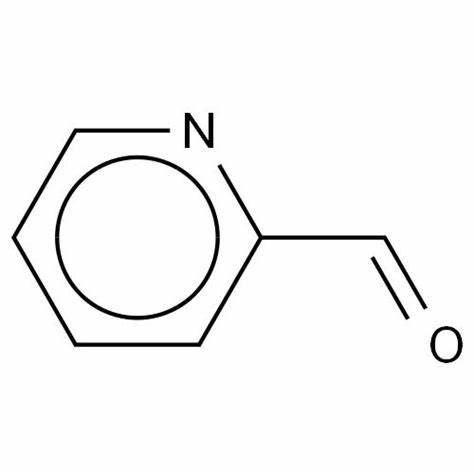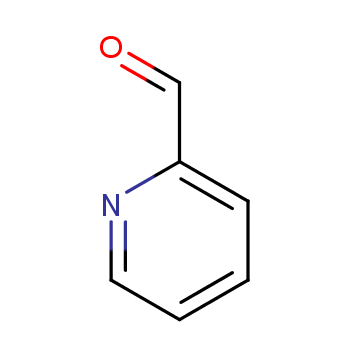What are the Properties, Synthesis Methods, and Applications of 2-Pyridinecarboxaldehyde?
Introduction
2-Pyridinecarboxaldehyde is a significant organic compound with a molecular formula of C6H5NO and a molecular weight of 107.11. This compound has garnered attention due to its unique chemical properties and wide range of applications. In this article, we will explore the chemical properties, synthesis methods, and research progress in various fields related to 2-Pyridinecarboxaldehyde.1

Property
Physical Properties
2-Pyridinecarboxaldehyde is a yellow liquid with a distinct aromatic smell at room temperature. It has a melting point of approximately -21°C to -22°C and a boiling point of 181°C. The compound's density is around 1.126 g/mL at 25°C, and it is easily soluble in water. Additionally, it has a vapor pressure of 73 Pa (20°C) and a flash point of 54.4°C, indicating its volatility and flammability.
Chemical Stability
2-Pyridinecarboxaldehyde is relatively stable under normal conditions but should avoid direct contact with oxidizing agents, air, and light to prevent oxidation reactions. It is soluble in water but may undergo hydrolysis under certain conditions. The compound also exhibits some reducibility and can react with oxidants.
Synthesis Method
The synthesis of 2-pyridinecarboxaldehyde involves various methods, including chemical oxidation, reduction, and catalytic oxidation. Catalytic oxidation, using specific catalysts like indium chloride or palladium complexes, is a primary synthesis method. This method offers mild reaction conditions, high yield, and purity, making it a focus of current research.2
Applied Research
Medical Field
2-Pyridinecarboxaldehyde finds applications in medicine, serving as a raw material for the organophosphate antidote Pralidoxime (PAM) and the laxative bisacodyl. Pralidoxime is used to counter organophosphorus pesticide poisoning, while bisacodyl is a stimulant laxative.3
Organic Synthesis
As a crucial intermediate in organic synthesis, 2-pyridinecarboxaldehyde is utilized in the production of various organic compounds, including bioactive Schiff base compounds. These compounds have applications in medicine, pesticides, and dyes.
Antibacterial Activity
Recent studies have shown that 2-pyridinecarboxaldehyde and its derivatives possess antibacterial properties. For instance, a specific complex exhibited bacteriostatic effects against common pathogenic bacteria, suggesting potential applications in antimicrobial materials and drug development.
Outlook
Future research on 2-pyridinecarboxaldehyde will focus on developing more efficient synthesis methods, expanding its medical applications, and enhancing its antibacterial properties. Continued exploration of this compound's potential will contribute to advancements in various fields.4
References
[1].Chandra, S.; Raizada, S.; Tyagi, M.; Sharma, P. K., Spectroscopic and biological approach of Ni (II) and Cu (II) complexes of 2-pyridinecarboxaldehyde thiosemicarbazone. Spectrochimica Acta Part A: Molecular and Biomolecular Spectroscopy 2008, 69 (3), 816-821.
[2].Lee, J. P.; Kassianidou, E.; MacDonald, J. I.; Francis, M. B.; Kumar, S., N-terminal specific conjugation of extracellular matrix proteins to 2-pyridinecarboxaldehyde functionalized polyacrylamide hydrogels. Biomaterials 2016, 102, 268-276.
[3].Raina, R.; Srivastava, T., Preparation and characterization of iron (III) complexes of 2-pyridinecarboxaldehyde thiosemicarbazone. Inorganica Chimica Acta 1982, 67, 83-86.
[4].Mirza, A. H.; Hamid, M. H. S.; Aripin, S.; Karim, M. R.; Arifuzzaman, M.; Ali, M. A.; Bernhardt, P. V., Synthesis, spectroscopy and X-ray crystal structures of some zinc (II) and cadmium (II) complexes of the 2-pyridinecarboxaldehyde Schiff bases of S-methyl-and S-benzyldithiocarbazates. Polyhedron 2014, 74, 16-23.




